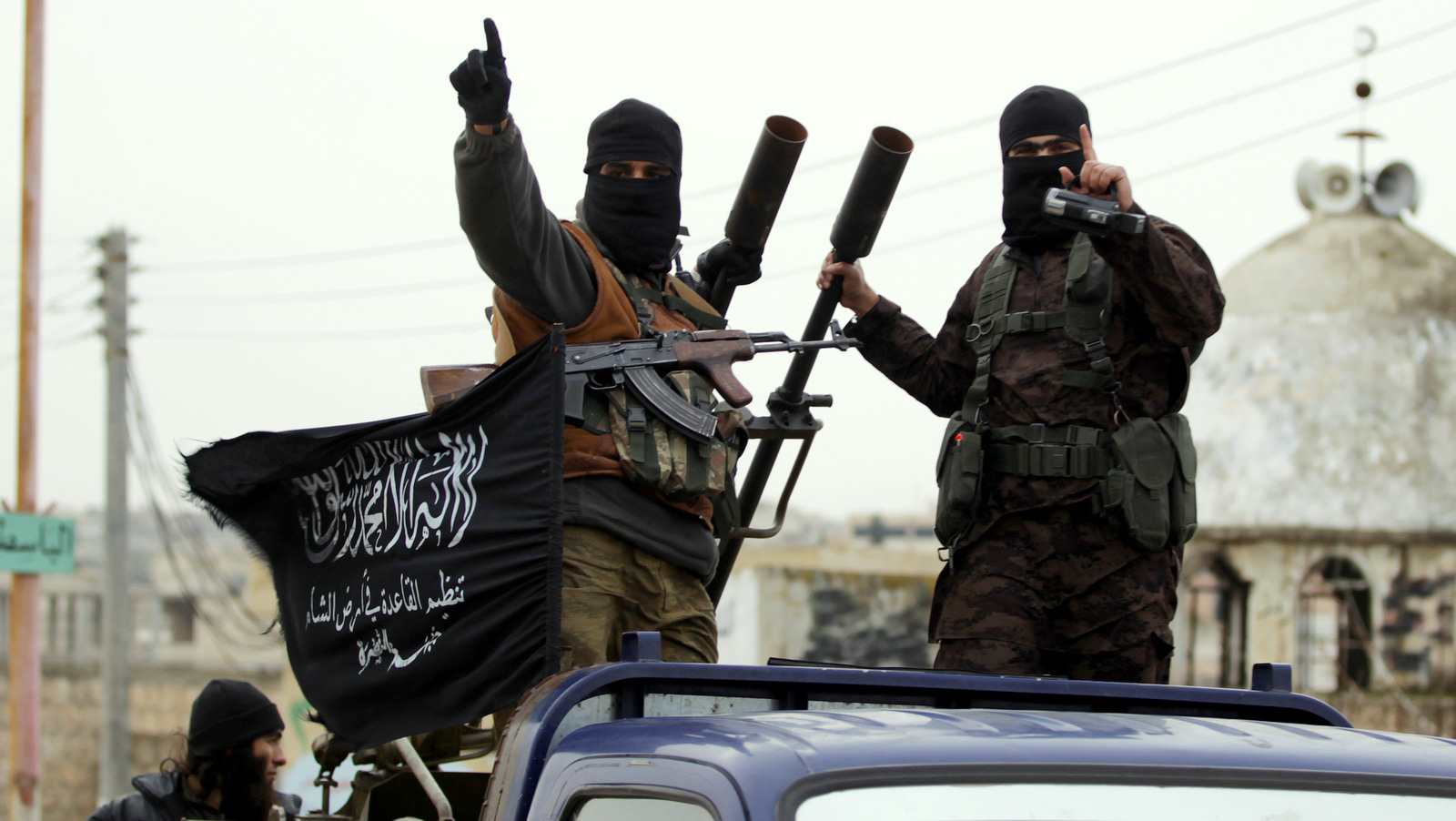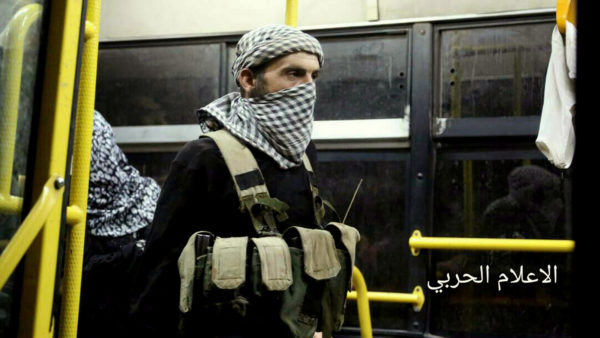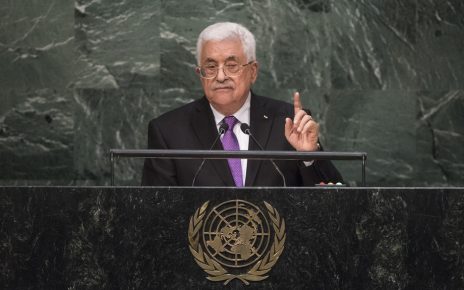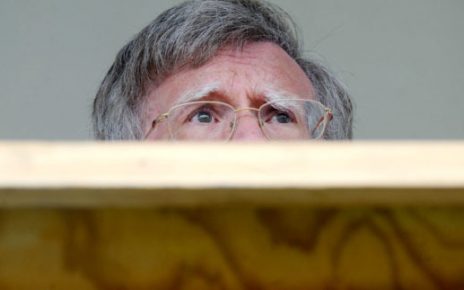One by one, all other areas in Syria under terrorist control have fallen, and now the final battle for Idlib looms large on the horizon.
IDLIB, SYRIA (Analysis) — Green city buses have delivered their last passengers to Idlib. In a recurring pattern across Syria, at the end of every battle in which Syrian government forces won back their territory, the Russian Center for Reconciliation has made deals with armed fighters: surrender and return to civilian life, or take the free bus ride to Idlib. The Russian police secured the safety of the fighters and their families who chose to not integrate back into society but to continue their jihad with the goal of establishing an Islamic state in Syria according to the Wahhabi political doctrine.
But this was the last time the bus ride to Idlib would be offered as an option. One by one, all other areas in Syria under terrorist control have fallen, and now the final battle for Idlib looms large on the horizon.
The Syrian conflict began in Daraa in 2011 as a U.S.-NATO project for “regime change.” The project failed to achieve its objective, but did cost about 500,000 lives as well as the wholesale destruction of many parts of Syria, and left millions of Syrians homeless or living abroad as refugees. Recently, the conflict has made a U-turn ending in Daraa — and setting the stage for the last battle of Idlib.
Idlib: a jihadist stronghold
The mainstream media labels Idlib as the last “rebel” stronghold, but the term “rebel” can apply only to those who are not jihadists. Idlib is a stronghold of al Qaeda and its affiliates and of ISIS fighters and their families. The term “rebel” does not apply to any of those groups. The U.S.-NATO war on Syria, for the purpose of removing the Syrian government, sold the idea that they were supporting Syrian freedom fighters, aka “rebels.” The Free Syrian Army (FSA) was a U.S.-NATO invention under the direction of the CIA in Turkey. But the FSA had problems early on, as they lacked support from the Syrian population: they couldn’t get Syrian men willing to fight. They resorted instead to the only available resources: international jihadists from the four corners of the globe.

While the Syrian National Coalition (SNC) in Istanbul and its supporters from Washington, London and Paris were in the media peddling the idea of a ‘secular and moderate’ fighting force in Syria, the FSA was in Idlib committing one of its first war crimes.
Pharmacist Dr. Samir Qanatri owned and operated his own pharmacy in his hometown of Idlib. He was a well-known supporter of secular ideology and served as vice chairman of the Pharmacists’ Union in Syria. The FSA beat him to death inside his shop and then burned his corpse and his shop. This was a very powerful message from the FSA to Idlib in 2011: we stand against secular ideology.
Qanatri was not a member of the then-ruling state party, Al Ba-ath. His premeditated murder had nothing to do with his association with the Syrian government, or the ruling party, as he was affiliated with neither. This was the U.S.-NATO-supported FSA sending a clear message that it would not tolerate secular ideology, regardless of what was being written in the Western media. Syrians were not following the Western media in 2011, and at the time had no idea there was a powerful propaganda campaign portraying the SNC and its armed wing, the FSA, as secular and moderate forces of change in Syria. The truth on the ground was just the opposite, but the Western media never covered that.
An attempt to sectarianize a secular state
Syria is home to 18 different religious minorities and the Syrian government has been secular for 40 years, an ideology well-ingrained in the Syrian mindset. This may be one of the reasons that Syrians of all economic levels, religions, sects and educational backgrounds rejected the SNC and FSA. From the outset, the majority of the Syrian population remained in favor of peace and security, as opposed to armed opposition.
The armed fighters in Syria did have some supporters across Syria, and this led to a great deal of destruction and bloodshed; however, the main base of their support continued to be among Syrian expats, Arabs and Westerners living in safety in Washington, London, Paris, Istanbul and Riyadh.
One of the very first political banners hung by the FSA on the coast in 2011 read: “Christians to Beirut, Alawites to their Grave.” The Western media and the Obama White House were careful not to translate that banner into English. The FSA and its political wing, the SNC, have never been secular or moderate. The founding members of the SNC and FSA were members of the Muslim Brotherhood. Their goal for Syria has always been to establish an Islamic government, thus abolishing the secular Ba’ath Party as well as the Syrian Social Nationalist Party (SSNP).
A terrorist occupation
Idlib has literally dozens of armed groups. Naming each and providing even a brief description would take many pages. The situation on the ground there can be described as such: civilians living under the occupation of terrorists, some of whom are Syrian; though foreign terrorists are more numerous than locals. Some of the terrorists have been settled in Idlib for years, and have large families consisting of wives, children and elderly relatives.
“Hay’at Tahrir al-Sham” is the largest group in Idlib. “Nour al-Din al-Zenki Movement” is also there — the group famously supported by the U.S. until it gained notoriety for chopping off the head of an 11-year-old boy in Aleppo, and making a video of the before-and-after process that went viral on the internet. The video caused the U.S. State Department under President Obama to reconsider its previous support of the group.
One of the unexpected groups occupying Idlib consists of Chinese citizens turned jihadists. Numbering around 4,000 persons, they brought their entire families with them, even establishing schools for their children. Known as Uyghurs, they knew they couldn’t create an Islamic state in China so they opted to create their utopia in Syria. Also numerous in Idlib are the Turkestani and Uzbek jihadists, likewise from Central Asia. They have acquired drones that they have used recently to attack the Hmeymim Military Airbase, near Latakia, as reported by the Russian Ministry of Defense.

Even the areas surrounding Idlib have been at the mercy of the many terrorist factions that have inundated the area. The small villages of al-Foua and Kefraya in the Idlib countryside are inhabited by non-Sunni Muslims, and were surrounded by terrorists for over three years. This made them a target of the FSA and their al Qaeda brothers-in-arms, who attacked and bombarded the villages almost daily for over three years, leaving the residents reportedly living on grass, leaves and the occasional UN food delivery.
The suffering was beyond description, as children and the elderly died from a lack of medical care and starvation. Now the villages sit vacant: a bitter wind blows through them as the last remaining hostages were released in a prisoner swap.
Almost 5,000 civilian hostages from the two villages boarded buses and were taken to the safety of Latakia, while 1,500 prisoners were released and taken to Idlib in the deal agreed upon by the armed fighters in Idlib and Russian negotiators.
Even as local residents sat on a bus waiting to evacuate al-Foua and Kefraya, one Egyptian terrorist boarded and proclaimed, “There’s no place for you in Idlib.” Strange that a foreigner would think himself the one to change the demographics of Syria: yet another example of the U.S.-NATO-sponsored sectarian war in Syria. This technique of pitting sects against one another might work on drawing boards in America and Europe; but thanks to the secular values ingrained in Syria, they had no chance of nationwide success.
The jihadist occupiers of Idlib have forfeited UN protection
UN Security Council Resolution 2254, dated December 2015, endorsed a roadmap for a peace process in Syria, and made clear that members of the coalition were to fight all terrorist factions, including ISIS as well as the various players named under the al Qaeda umbrella. Resolution 2254 makes it clear that no ceasefire would ever include those groups.
In May of 2017, an agreement was signed during the Astana talks backed by Turkey, Russia and Iran that established de-escalation zones in Syria, one of which was in the Idlib province. But the armed fighters who control Idlib are overwhelmingly derived from the terrorist groups specifically banned from protection under Security Council Resolution 2254. Not only are those fighters overwhelmingly members of al Qaeda- and ISIS-affiliated terrorist groups, but many are not Syrian. When the bombs start falling over Idlib, the Western media may report them as a violation of the de-escalation zone provision; however, this provision does not apply, as the Syrian government intends to target only the groups specified as legitimate targets under Security Council Resolution 2254.
There are Syrian civilians who are being held captive in Idlib and are being used as human shields. Those civilians are being used as a tool to pressure the UN, Turkey and others to stop any military action taken by Russia and Syria based on the humanitarian crisis that may develop due to their presence in the province. Over the past seven years of the conflict, many of Idlib’s residents have left to take up refuge in nearby Latakia; some went to UN camps in Turkey at Gaziantep; while others made the trek to Germany in the summer of 2015.
Still others, however, remain in their homes, shops or farms in Idlib despite the hardships of living under terrorist control. For a myriad of reasons, they did not flee and have had to face living under foreign occupation by international jihadists. Some of those residents have kept in contact with relatives outside of Idlib and have expressed fear over the coming firestorm, but have no options.
Idlib’s Natives face no good choices
Some experts suggest the majority of Syrian residents in Idlib are waiting and hoping for the day when the Syrian Army liberates the area so they can resume a normal life. This is based on past history, including the liberation of East Aleppo in late 2016, the liberation of East Ghouta several months ago, and the recent liberation of Daraa: in each case, the majority of civilians streaming out of the recently liberated cities said they were happy to be free once more.
Watch | Eastern Ghouta civilians greet the Syrian Army as it enters Ain Tarma
In 2011, Turkey set up the tents in Gaziantep, just over the border from Idlib, before any refugees began fleeing the still budding Syrian conflict. Was the move an act of clairvoyance, or was it perhaps under instruction from the CIA office in nearby Adana?
Refugees would soon arrive and fill those tents, creating a humanitarian crisis worthy of UN support and funding. The refugees were mainly women and children who left their men behind to fight with the FSA for a paycheck distributed by Saudi Arabia in Turkey. Leaving women and children alone is risky anywhere, and in Turkey reports of rape and resulting unwanted pregnancies as well as the sexual abuse of small boys and girls, soon made headlines. The rapists turned out to be Turkish guards tasked with control of the thousands of new Syrian refugees.
When the dust settles over the ruins of Idlib, there will be survivors, including terrorists who can’t stay in Syria because they are not Syrian citizens. However, various countries, including the U.K., are refusing to allow their own citizens to return home after fighting for terrorist groups in Syria; instead, they are revoking their citizenship. Some countries, such as France, have gone so far as to bluntly state the solution is to kill them before they come home. The Canadian prime minister was ridiculed by his citizens after he suggested jihadists could be rehabilitated and even compared the terrorists coming home to Canada as similar to the Italian migrants to Canada.
U.S. Secretary of Homeland Security Kirstjen Nielsen recently warned of the threat posed by fighters attempting to return home:
We are entering a new phase of the fight. Jihadists are going underground, dispersing to other safe havens — including on the internet and returning to their home countries.”
While the exact details of the recent private meeting in Helsinki between U.S. President Donald Trump and Russian President Vladimir Putin have yet to be revealed, the main points of concern agreed upon regarding Syria were:
- The security of the Syrian-Israeli border at the Israeli-occupied Golan Heights must be maintained by SAA and clear of Iranian military presence.
- The U.S. and Russia will work in coordination to achieve peace in Syria.
It would appear there are no glaring differences between the two leaders’ approach to ending the Syrian conflict, which was planned, funded and executed under the Obama administration. President Trump inherited the conflict and has stated repeatedly he wants the United States out of wars in the Middle East.
The coming battle for Idlib
The battle for Idlib will begin soon, as the SAA secures areas to the South and West of the province; then the aerial bombardments will begin. We will probably see and hear the same war-weary correspondents from CNN and the BBC, reporters who never applied for a visa to enter Syria.
Illegals crossing the border in the U.S. are considered criminals, subject to arrest and prosecution. Yet, American journalists have been embedded with terrorist groups in Syria for eight years, and have used smugglers in the human trafficking business to ferry them in and out through Turkey. Some of these journalists don’t bother with groundwork and instead opt to take the easy way out, reporting from the Beirut Hilton or the Istanbul Plaza.
Stay tuned: the coverage of Idlib will begin soon, and the green buses can finally get back to their job of transporting Syrians as they live, shop and work in peace at last.
Written by Steven Sahiounie
Source: www.mintpressnews.com




